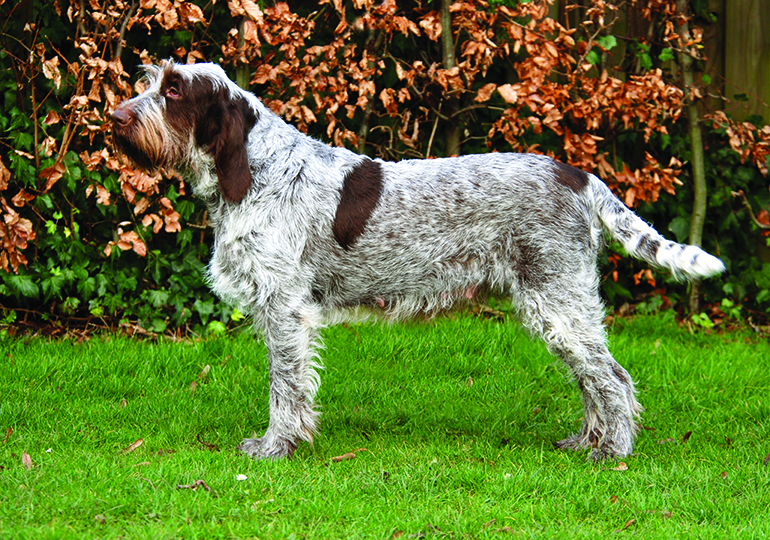Breeds
Italian Spinone

GROUP 3 - GUNDOGS
History
The breed is believed to have been developed in the Piedmont region of Italy. As the Spinone is a very ancient breed (it is believed to be one of the oldest gun dogs in existence), it is not known exactly what the origins of the breed are; there are many different theories. Some of these claim that the Spinone could have originated in Italy, France, Spain, Russia, Greece, or Celtic Ireland. (1)
The breed was not officially known as "Spinone" until the early 19th century. Before then, some areas knew the breed as the "Spinoso". The breed may have been named after an Italian thorn bush, the spino, which was a favourite hiding place for small game because for larger animals it was practically impenetrable. Only thick-skinned, coarse-haired animals could fight through the branches unharmed to locate the game. The Spinone was the breed most capable of doing so, and, perhaps, therefore the name was formed. (1)
Appearance
The Spinone has a square build (the length of the body is approximately equal to the height at the withers). It is a strong-boned, solidly built dog with a well-muscled body and limbs that are suited to almost any kind of terrain. A brown and white Spinone can sometimes be confused with a German Wirehaired Pointer by someone unfamiliar with the breeds. However, the long head and pronounced occipital are unique to the breed. He has an expression that shows intelligence and understanding and is often described as having human-like eyes. Even as adults, Spinoni retain disproportionate, puppy-like, webbed paws which make them powerful swimmers. (1)
Temperament
The Spinone is easy going, docile, and affectionate towards both people and dogs. It is well known for being loving and gentle with children. Its extremely patient nature also helps with this, but children should be taught not to take advantage of this trait. It is loyal to those it knows and still friendly to those it does not. The breed is not known for any aggression, but any dog breed can develop fear aggression if not properly socialised during the "window of socialisation" from ages 6 weeks to 14 weeks. (1)
Centuries of working with man as a hunting companion has created a loyal, intelligent dog that is easily trained, although some can be stubborn about performing a learned task if they see no point in it. Because they are sensitive, motivational training works best for this breed, as this gentle dog's feelings can easily be hurt when handled incorrectly. (1)
The Spinone can be a very active breed, but it is not a racy dog like most other hunting breeds. The Spinone typically moves at the relaxed trot that is characteristic of the breed. It has often been called the perfect dog to run or jog with, because it will not run off in front and leave its human companion struggling to keep up as it prefers the slower pace itself. It can be more than happy in a small yard and does not necessarily need acres of land. The small garden combined with regular walks would suit a Spinone well.
In part due to its long beard and lip folds, the Spinone can have a tendency to slobber. (1)
Sizes
Weight:
Dogs 34-39 kgs (70-82 lbs)
Bitches 29-34 kgs (62-71 lbs)
Height:
Dogs 59-69 cms (23.5-27.5 ins)
Bitches 58-64 cms (23-25.5 ins) (2)
In Conclusion
Now you know a little about the Italian Spinone, you may think that this is the dog for you. Before you make a decision, please make contact with the breed club or your State controlling body for purebred dogs. They will be able to give you information about available puppies and also suggest dog shows where you can see the breed and speak to breeders. In this way you will gain a better perspective of the Italian Spinone and its needs, and whether this breed would suit your lifestyle.
References
- Wikipedia.org
- Dogs Australia
Image: worlddogshow2018
Breeders
Sorry, there are currently no breeders advertising for this breed. If you are a registered Dogs SA breeder and wish to advertise here please create an advertisement here.

